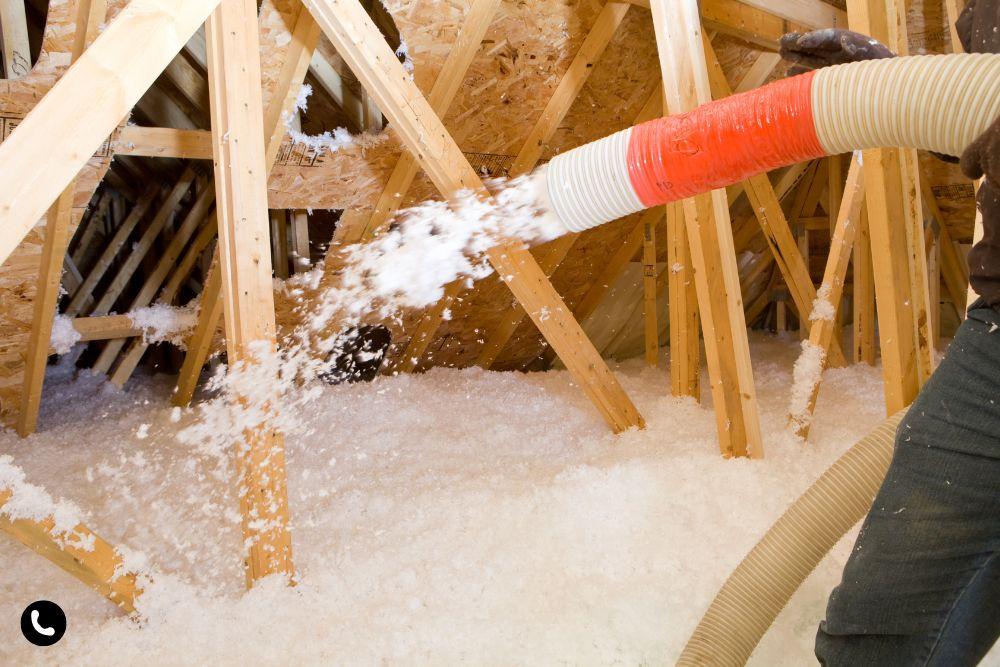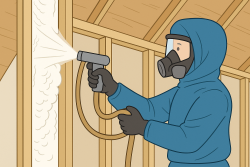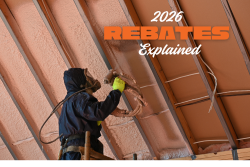If you've been thinking about beefing up your home's insulation, you might wonder if adding blown-in insulation over what's already there is possible. Why start from scratch if you don't have to? It sounds simple enough—pile on more insulation, right? Well, not so fast. While blown-in insulation can help to seal in warmth and keep those utility bills down, there are a few things to watch out for.
The type and condition of your existing insulation, the potential for moisture build-up, and the impact on ventilation are all factors that can make or break this approach. Before adding that extra layer, let's dig into what you need to know.
Why Consider Adding Blown-In Insulation Over Existing Insulation?
Adding blown-in insulation on top of what you already have is an easy fix; it's a smart move in many cases. Here's why it could be worth considering:
- Boosts Energy Efficiency: More insulation means more resistance to heat flow, which keeps the house more comfortable during the summer and cooler during the winter. The added R-value (a measure of insulation's effectiveness) can help lower heating and cooling costs.
- Avoids the Hassle of Removal: If the existing insulation isn't damaged or contaminated, there's no need to rip it out and start over. You can add more insulation to build up the R-value.
- Improves Comfort and Noise Reduction: Blown-in insulation fills gaps and creates a denser barrier, which can help reduce drafts and noise transmission between rooms.
But, like any home improvement project, it can be more complex than it seems.
What to Consider Before Adding Blown-In Insulation Over Existing Insulation
Before you top up your insulation, you must closely examine what you're working with. Here are some critical things to consider:
- Condition of Existing Insulation:The first step is to assess the current state of your existing insulation. Is it in good shape? Or are there signs of trouble, like moisture, mould, pest infestation, or compressed and ineffective material? Adding more on top is like putting a band-aid on a more significant problem if the insulation is damp or mouldy. You must remove and replace any compromised insulation to prevent more significant issues.
- Type of Existing Insulation:You should also consider the type of insulation already installed. Blown-in insulation can generally be added over fibreglass batts, existing blown-in cellulose, or fibreglass insulation if in good condition. However, be cautious about combining materials with very different properties, like adding loose fill over spray foam insulation, which might be better.
- Ventilation and Airflow:A critical factor that's often overlooked is the impact on ventilation. Maintaining proper ventilation is crucial to preventing moisture build-up, especially in attics. Blown-in insulation can block soffit vents or other airflow pathways, leading to condensation, mould growth, and structural damage. Ensure that vents are clear and air is circulating correctly before and after adding insulation.
- Air Sealing:Insulation without proper air sealing is like keeping water in a leaky bucket. If there are gaps and cracks where air can leak in and out, the effectiveness of adding more insulation is significantly reduced. Seal around pipes, wiring, ductwork, and other penetrations to prevent drafts and air leakage.
- Weight and Structural Considerations:Blown-in insulation, especially when densely packed, can be heavy. Adding too much weight over fragile or older ceiling drywall could cause sagging or structural damage. Ensure the space can handle the extra load, or consult with a professional to assess the capacity of your attic or wall structure.
- Building Codes and Local Regulations:Always check your local building codes before adding more insulation. Some regions have specific requirements for R-values, insulation types, and installation methods, especially in areas prone to heavy snowfall or extreme weather.
Best Practices for Adding Blown-In Insulation Over Existing Insulation
If you've decided that adding blown-in insulation is the way to go, here are some best practices to follow to get the best results:
- Hire a Professional for Inspection and Installation:While DIY can be tempting, hiring a professional ensures that the existing insulation is appropriately assessed and that the new insulation is installed correctly. A professional can also make sure that ventilation and airflow are maintained.
- Choose the Right Type of Blown-In Insulation:Selecting a suitable blown-in insulation material is essential. Cellulose is excellent for filling gaps and providing good thermal resistance, while fibreglass offers better moisture resistance. Consider the needs of your home and climate.
- Ensure Even Distribution:When adding blown-in insulation, distribute it evenly across the entire area. Uneven insulation can lead to thermal bridging, where heat escapes through less-insulated spots, reducing efficiency.
- Regularly Inspect and Maintain Your Insulation:After installation, periodically check for any signs of moisture, air leaks, or other issues that could compromise your insulation. The effectiveness and life of insulation can be extended with regular maintenance of both new and existing insulation.
Conclusion: Should You Add Blown-In Insulation Over Existing Insulation?
Adding blown-in insulation over existing insulation is an effective and budget-friendly way to increase your home's energy efficiency and comfort. But like any good investment, it requires some planning and a close look at what you're starting with. By understanding your current insulation situation, ensuring proper ventilation and air sealing, and following best practices, you can keep your home warm, reduce energy costs, and avoid potential headaches.
At Reitzel Insulation, we have the expertise to help you make the right decisions for your home insulation needs. Whether you need an inspection, a top-up, or a complete insulation overhaul, our team guides you every step of the way. Contact us today to get started!

















